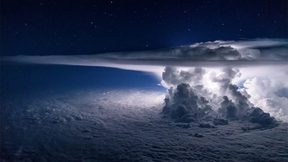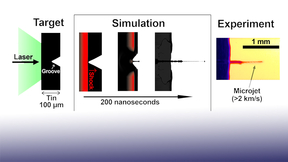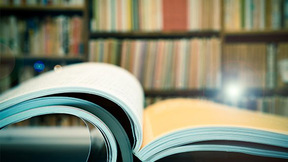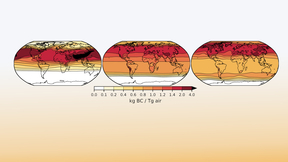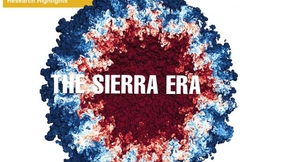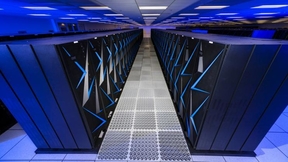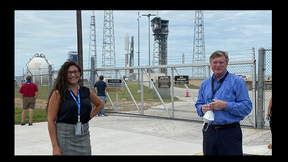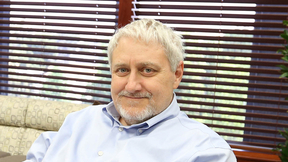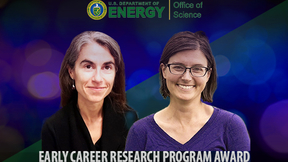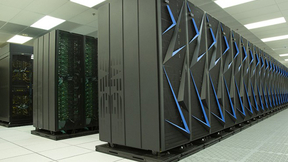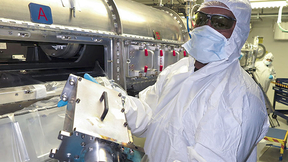Back
Science
Climate models overestimate natural variability
By looking at satellite measurements of temperature changes in the lower layer of Earth’s atmosphere, scientists found that climate models may have overestimated the decade-to-decade natural variability of temperature. Lawrence Livermore National Laboratory (LLNL) statistician Giuliana Pallotta and climate scientist Benjamin Santer created a statistical framework to…
Microjets are faster than a speeding bullet
When a shock wave travels through material and reaches a free surface, chunks of material can break away and fly off at high speeds. If there are any defects on the surface, the shock forms microjets that travel faster than a speeding bullet. Understanding how these microjets form and how they interact with material help to improve spacecraft shielding and understanding a…
Lab scientists among most cited researchers worldwide
Fifty-seven researchers from Lawrence Livermore National Laboratory (LLNL) were among the top 2 percent of the most cited researchers worldwide throughout their careers, according to research on metascience by Stanford University. Metascience is the "study of studies" using scientific methods. Stanford University professor John Loannidis worked alongside U.S.-based Kevin…
Examining climate effects of regional nuclear exchange
A team of Lawrence Livermore National Laboratory (LLNL) researchers has found that the global climatic consequences of a regional nuclear weapons exchange could range from a minimal impact to more significant cooling lasting years. The five LLNL scientists examined the potential for global climate changes from large urban fires ignited in a hypothetical regional nuclear…
Meteorites might have kick-started life on early Earth
The incorporation of the biologically vital element phosphorus into material found in living species may have formed during impact from astrophysical bodies on early Earth. NASA’s Exobiology Program has awarded Lawrence Livermore National Laboratory (LLNL) senior scientist Nir Goldman a three-year grant to research meteorite impacts on Earth. Goldman is seeking to…
The Sierra Era
Lawrence Livermore’s high-performance computing (HPC) facilities house some of the fastest supercomputers in the world, including the flagship Sierra machine. Online for more than a year, Sierra primarily runs simulations for the National Nuclear Security Administration’s (NNSA’s) Advanced Simulation and Computing (ASC) Program. Sierra substantially increases the…
Lab stands tall on bi-annual list of Top500 supercomputers
Lawrence Livermore National Laboratory (LLNL) can lay claim to housing four of the world’s 100 most powerful supercomputers, more than any other institution according to the TOP500 List announced Monday during the virtual Supercomputing 2020 conference (SC20). The 125-petaFLOP peak Sierra, the National Nuclear Security Administration’s flagship supercomputer, remained…
Solar system formed in less than 200,000 years
A long time ago — roughly 4.5 billion years — our sun and solar system formed over the short time span of 200,000 years. That is the conclusion of a group of Lawrence Livermore National Laboratory (LLNL) scientists after looking at isotopes of the element molybdenum found on meteorites. The material that makes up the sun and the rest of the solar system came from the…
LLNL welcomes 'Ruby' supercomputer for national nuclear security mission and COVID-19 research
Lawrence Livermore National Laboratory (LLNL), along with partners Intel, Supermicro and Cornelis Networks, have deployed “Ruby,” a high performance computing (HPC) cluster that will perform functions for the National Nuclear Security Administration (NNSA) and support the Laboratory’s COVID-19 research. Funded by NNSA’s Advanced Simulation and Computing (ASC) program, the…
Lab has ties to Nobel Prize winner Andrea Ghez
The 2020 Nobel Prize in physics has been awarded to Andrea Ghez of the University of California, Los Angeles, and Reinhard Genzel of the Max Planck Institute for Extraterrestrial Physics, for their discovery of the black hole at the center of the Milky Way galaxy. They share the award with Roger Penrose of Oxford University for his mathematical proof that black holes are…
Lab assists in NASA launch of Mars rover
When an Atlas V-541 rocket lifted off Thursday morning (July 30) for Mars from Cape Canaveral Air Force Station with the Perseverance rover in tow, two Lawrence Livermore National Laboratory (LLNL) scientists had front row seats. The pair, Steve Homann and Jessica Osuna, researchers in the Lab’s National Atmospheric Release Advisory Center (NARAC), part of the Nuclear…
LLNL Director Bill Goldstein announces retirement
William H. Goldstein today announced he will retire as director of Lawrence Livermore National Laboratory (LLNL) and president of Lawrence Livermore National Security, LLC, (LLNS) following the selection of his successor. Goldstein was named the 12th director of the Lab and the third president of LLNS on March 31, 2014. LLNS manages the Laboratory for the Department of…
DOE honors two early career Lab scientists
Two scientists from Lawrence Livermore National Laboratory (LLNL) are recipients of the Department of Energy’s (DOE) Office of Science Early Career Research Program award. Federica Coppari and Erin Nuccio are among 76 scientists nationwide selected for the recognition. Under the program, typical awards for DOE national laboratory staff are $500,000 per year for five years…
LLNL team helps develop tularemia vaccine
Two Lawrence Livermore National Laboratory (LLNL) researchers who have worked for more than eight years to develop a tularemia vaccine are part of a three-institution team that has been funded to bring their candidate to readiness for use. The two biomedical scientists, Nick Fischer and Amy Rasley, will collaborate with scientists from the University of New Mexico and the…
Americans used less energy in 2019
Turning those lights off when you leave has a benefit. In 2019, Americans used less energy than in 2018, according to the most recent energy flow charts released by Lawrence Livermore National Laboratory (LLNL). Each year, LLNL releases flow charts that illustrate the nation's consumption and use of energy. Americans used 100.2 quads (quadrillion BTU) of energy, which is 1…
Update on summer student program
In light of the uncertainties surrounding the current COVID-19 pandemic, we are temporarily suspending the processing of student hires at Lawrence Livermore National Laboratory (LLNL) while we consider if and how we will be able to conduct our student programs in the upcoming summer months. For all students — those who have received an offer, for returning summer students,…
New partnership to unleash U.S. supercomputing resources in the fight against COVID-19
The White House announced the launch of the COVID-19 High Performance Computing Consortium to provide COVID-19 researchers worldwide with access to the world’s most powerful high performance computing resources that can significantly advance the pace of scientific discovery in the fight to stop the virus. “America is coming together to fight COVID-19 and that means…
Nuclear diagnostics help pave way to ignition on NIF
At its peak, a NIF inertial confinement fusion (ICF) implosion lasts about 100 trillionths of a second. The imploded fuel is a hundred millionths of a meter in diameter and as much as eight times denser than lead. The center of the imploded capsule is a few times hotter than the core of the sun. Developing a clear understanding of exactly what’s happening in a NIF…
Observations of melting metal at the picosecond scale
For the first time, Lawrence Livermore National Laboratory (LLNL) scientists and collaborators have observed the shock melting and refreezing of a metal (zirconium) at the picosecond scale (trillionths of a second). Melting and freezing are some of the most common processes but can be difficult to understand since the fundamental mechanisms occur on near-atomic and…
Glacier retreat study helps predictions of climate future
Tropical glaciers in Africa and South America began their retreat simultaneously at the end of the last ice age about 20,000 years ago, according to a recent study by a multi-institutional research team that includes Lawrence Livermore National Laboratory’s (LLNL) Susan Zimmerman. The finding of synchrony in ice retreat across the global tropics clarifies how the low…


